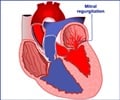Mitral Valve Repair
Mitral valve repair can be done in two ways. “Balloon Valvuloplasty” is a cardiac catheterization procedure mostly performed for patients with
Balloon valvuloplasty cannot be performed in patients with calcified mitral valves, presence of blood clots or severe mitral valve regurgitation.
“Open Commissurotomy” is performed mostly on patients with mitral regurgitation. This is an open-heart procedure performed by cardio-thoracic surgeons. Just suturing the cleft in patients with congenital cleft leaflets, controls the mitral regurgitation.
Excess tissues from the leaflets are removed and the cusps are reshaped.
Annuloplasty is where the enlarged annulus or the base of the valve is repaired and supported by an artificial band or ring.
Chordae tendinae are reconstructed if needed using sutures. Any calcium deposits present in the valves are carefully removed.
Recent studies show that early intervention and repair of mitral valve can prevent irreversible heart damage.
Repair holds better outcome for patients with degenerative disease. Depending on the cause of mitral regurgitation, a simple repair has 85-90% chance of a patient not needing further intervention for the next 10 years.
Rheumatic valves are better replaced than repaired because they are usually both stenotic and regurgitant.
Valves damaged due to bacterial infection are occasionally repaired.
Isolated mitral valve disease is repaired using the minimally invasive method, where the heart is exposed by a 2-3 inch incision on the right chest or middle of the sternum. The procedure can also be performed using a robotic device that helps in doing a more precise surgery.












